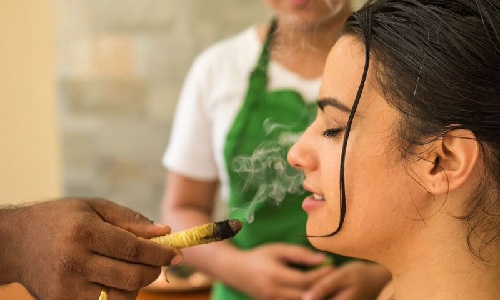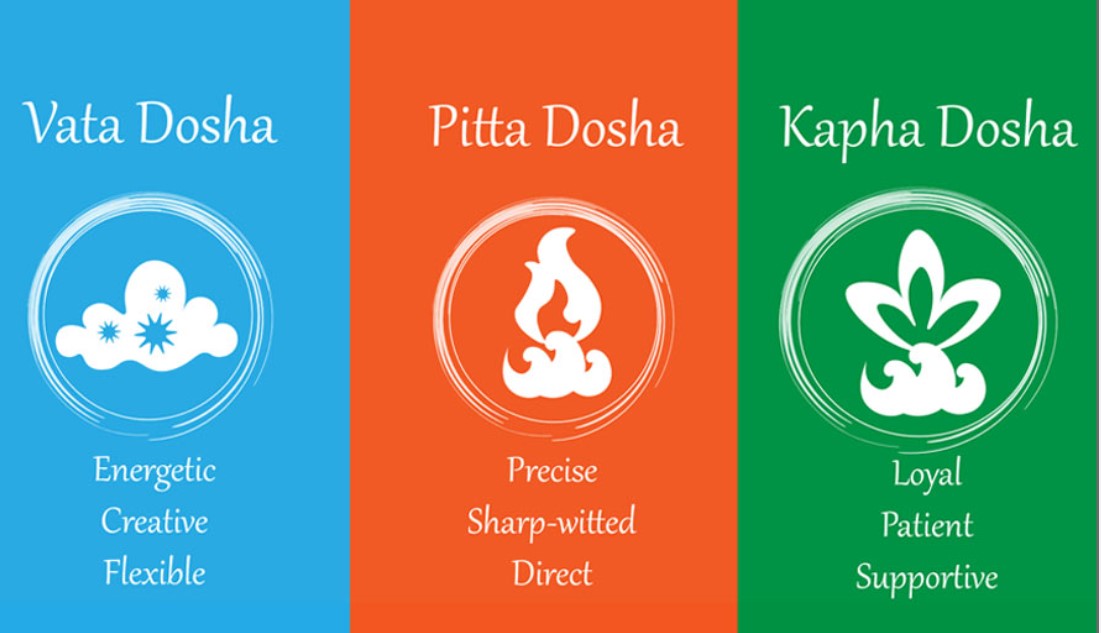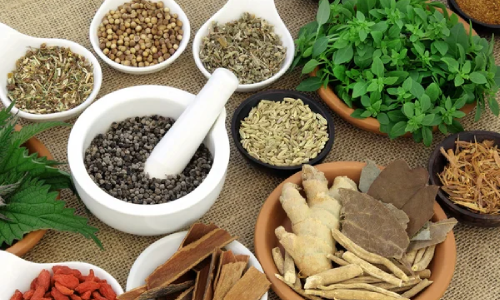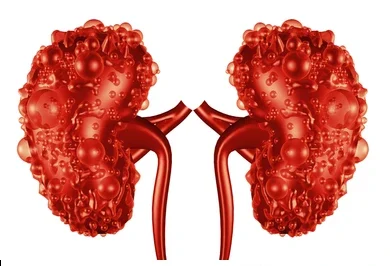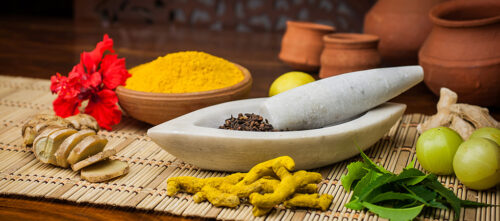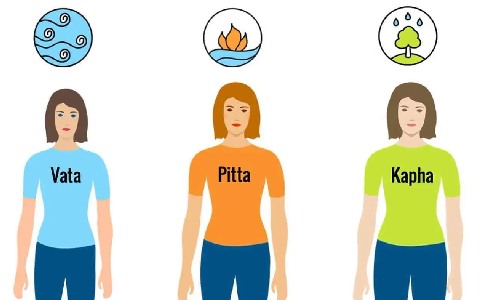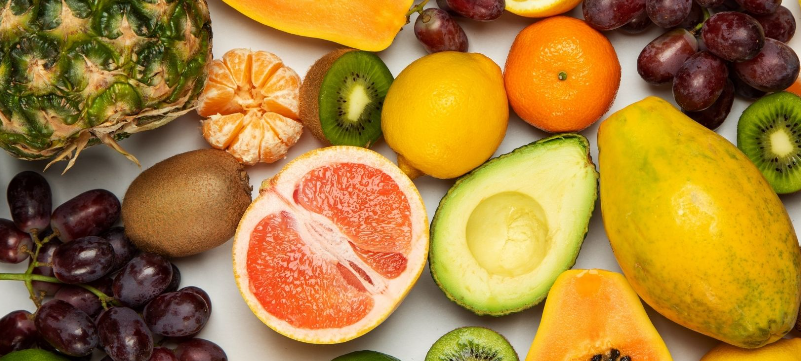To when we hear the word -Ayurveda, we think of Panchakarma, massages, herbs and Doshas. But did you know that there is a unique Ayurvedic therapy that involves medicated smoking? Yes, it is called Dhoomapana, and it has been a traditional healing practice for centuries. What is Dhoomapana Therapy ? Dhoomapana is an Ayurvedic practice of inhaling medicated smoke. Do not get it confused with smoking cigarettes! It is known as a type of therapy that uses herbal wicks and smoke to treat certain health conditions and help bring the body into balance. It is, indeed, a very controlled and intentional practice that is specifically used to reduce Kapha and, moreover, improve the flow of Vata. In Ayurveda, Dhoomapana, helps to cleanse the body of toxins and, in addition, treat conditions like respiratory problems, headaches, and even hair loss. Benefits of Dhoomapana Dhoomapana offers a wide range of health benefits. Here’s how it helps: Head and senses Relieves heaviness of the head Cures headaches and migraines Soothes nasal congestion and helps with rhinitis Ears and throat Soothes earaches and hoarseness of voice Assists with pain surrounding the eyes Respiratory system Treats asthma, coughing, and sneezing Clears postnasal drip and excess mucus Mouth and teeth Helps to strengthen teeth and minimize bad breath Relieves toothaches and helps with thick tongue Hair and skin Improves hair growth and prevents balding Enhances skin tone and reduces pallor Other Benefits Increases energy levels and decrease lethargy. Strengthens skull bones and improves voice quality. By balancing Vata and Kapha Doshas, Dhoomapana provides a holistic healing effect, making it a go-to remedy for several conditions. Types of Dhoomapana In Ayurveda, Dhoomapana can be categorised into three types based on its intensity: Snigdha Dhooma – oily and gentle smoke that pacifies mild symptoms Madhyama Dhooma – moderate smoke for medium imbalances Tikshna Dhooma – intense smoke for severe Kapha conditions Each type has a specific purpose; therefore, the choice depends on the individual’s condition and Dosha balance. When to Perform Dhoomapana ? Ayurveda is all about timing, and consequently, Dhoomapana is no different. Dhoomapana is best done at these times: After a shower After meals After treatment such as Vamana (therapeutic vomiting) or Nasya (nasal cleansing) After brushing your teeth or using collyrium for the eyes This therapy can be performed once or twice a day. Follow proper steps to maximize the benefits. How to Do Dhoomapana ? Preparation Ensure that you are, first and foremost, in a comfortable yet upright position. At the end of the herbal wick (Dhooma Varti), light a flame and allow it to settle. How to Make Dhoompana Varti (herbal wick) ? Making a herbal wick at home is simple: Use a rectangular piece of cotton cloth (5×10 cm). Wash it in hot water and dry it in the sun. Combine the ghee and turmeric to make a paste. Apply the paste to the cloth, then fold it, and allow it to dry in the shade. It will be usable as soon as it is completely dry. Inhalation Sniff the smoke through one nostril while blocking the other. Alternate nostrils for each inhalation. For conditions of the throat, you should inhale through the mouth. Exhalation Always exhale through the mouth; therefore, do so to avoid issues like vision loss. Do this three times for best results. How to Know if Dhoomapana is Successful ? You’re doing it right if: Your heart and throat are light and clear Kapha and its symptoms e.g. mucus have decreased Your mind is lighter and clearer, and you feel refreshed Excess of Dhoomapana, consequently, aggravates Vata in the body, ultimately leading to dryness and discomfort. Cold water or even buttermilk can soothe the symptoms in that case. How Does Dhoomapana Work? The herbs used in Dhoomapana, consequently, produce smoke that, in turn, acts like activated charcoal. This smoke absorbs excess Kapha and detoxifies the body, much like fumigating a wound to eliminate germs. When done correctly, Dhoomapana can prevent issues like cough, voice disorders, and hair loss; moreover, it promotes overall health. Who Should Avoid Dhoomapana ? While Dhoomapana has numerous benefits, it’s not for everyone. Avoid it if you: Have just undergone cleansing therapies such as Virechana or Vasti. Have bleeding disorders like Raktapittal or are subjected to Visha (poisoning) Are sad, pregnant, tired, giddy or angry, thirsty, injured and have excessive dryness in the body Have Pitta and Ama Dosha Had a meal with milk, honey, curd; in addition, I have consumed alcohol. Have conditions, such as cataract, diabetes or head injury. Dhoomapana should only be performed under the guidance of a qualified Ayurvedic doctor. Dhoomapana is, indeed, a remarkable example of Ayurveda’s holistic approach to health; moreover, it emphasizes the interconnectedness of body, mind, and spirit. It’s a method to detoxify the body, restore its balance and address a wide range of ailments. However, like any Ayurvedic treatment, Dhoomapana should only be practiced under the guidance of an Ayurvedic doctor. Also, do not overdo Dhoomapana unless required. Are there any such Ayurvedic therapies you wish to know about? Let me know in the comments! If you are struggling with any health issues, you can either book a consultation with us or send us a message via WhatsApp to +91 79074 89839. We have the best Ayurvedic doctors in Trivandrum who are always glad to help you. If you have any queries, contact us. You can also visit us at our hospital.
An Ayurvedic Guide to Dhoomapana
